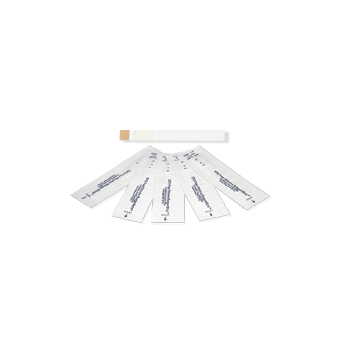Most people looking to test their drinking water for chlorine want to know the concentration of free chlorine, also called the free chlorine residual, in their drinking water. Basically speaking, free chlorine (hypochlorous acid) acts as an effective sanitizing and disinfecting agent in lower concentrations but can cause serious harm and damage to organic material (i.e. human skin, hair, cells, etc.) in higher concentrations.
The US Environmental Protection Agency has set the Maximum Contaminant Level (MCL) for free chlorine at 4.0 parts per million, also known as milligrams per liter (mg/L).
The most commonly used test for free chlorine residual uses a reagent called DPD (what is DPD?). More specifically, it requires DPD-1 and DPD-1 comes in several different forms: liquid, powder, tablet and reagentstrip form.








